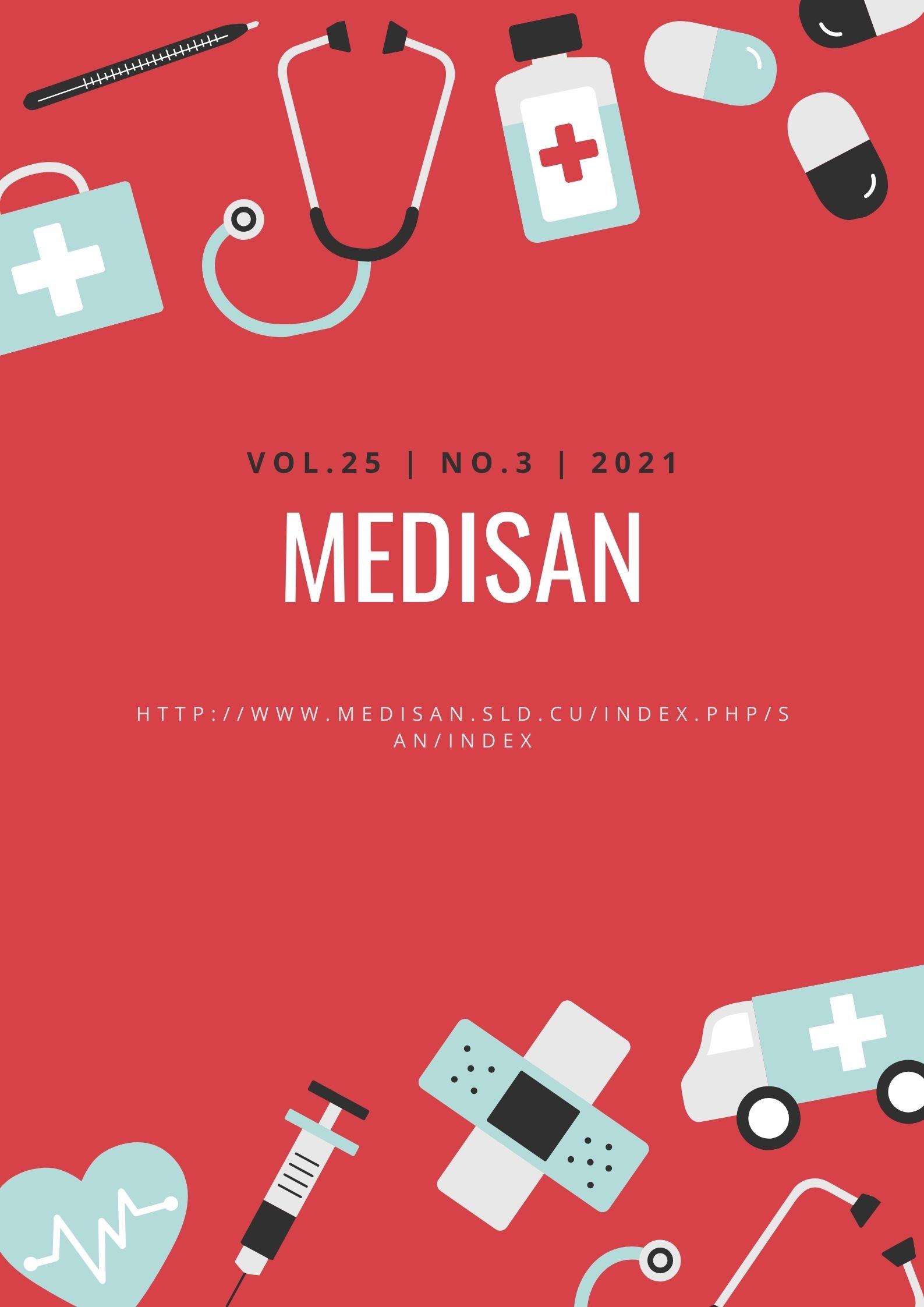Spontaneous contractile dynamics of the vascular smooth muscle of the external carotid artery
Keywords:
external carotid artery, vascular smooth muscle, contractile dynamics, Wistar rats.Abstract
Introduction: The external carotid is a muscle artery irrigating all components of the masticatory system, so that the regulation of the contractile dynamics of its vascular smooth muscle is important.
Objective: To describe the spontaneous contractile dynamics of the vascular smooth muscle of the external carotid artery.
Methods: An experimental investigation was carried out in the Oscar Langerdorff Physiology Institute from the Medicine Faculty at Rostock University, Germany, from October to December 2018, in which 60 rings of the external carotid artery obtained from 10 adult Wistar rats from both sexes. An helical cut was made to each ring and they were placed in an organ bath, to be registered, then, the spontaneous strain developed by the vascular smooth muscle against a charge of 1 g, during different time intervals was registered.
Results: The records from the spontaneous contraction-relaxation of the vascular smooth muscle in the external carotid artery fluctuated within a narrow range of strain figures, with maximum values of 8.48 ± 0.03 and minimum of 8.33 ± 0.03, and a difference of 0.08 mN/g of muscle. Average strain values in each time interval were very closed, with standard deviations which evidenced a very small data dispersion regarding the mean. The average general registered strain was 8.40 ± 0.032 mN/g.
Conclusions: The spontaneous contractile dynamics developed by the vascular smooth muscle of the external carotid artery showed an irregular progression in time, with average strain values fluctuating between 5-10 mN/g of muscle.
Downloads
References
2. García Carrillo M, García Santos JM, Franulic Guggiana M, Sánchez Jiménez S, Moreno Pastor A, Solano Romero AP. La gran olvidada: arteria carótida externa. Madrid: Sociedad Española de Radiología Médica; 2016.
3. Campanioni F, Bachá F. Anatomía aplicada a la estomatología. La Habana: Editorial Ciencias Médicas; 2012. p. 119.
4. Canalda C. Medicación intraconducto. En: Canalda C, Brau E. Endodoncia. Técnicas clínicas y bases científicas. Madrid: Masson; 2014. p. 184-93.
5. Martin P. Farmacodinamia del músculo liso vascular. En: Consolini AE, Ragone MI. Farmacodinamia general e interacciones medicamentosas. Mecanismo de acción de fármacos y metodología de estudio experimental. Buenos Aires: Editorial Universidad de La Plata; 2017 [citado 12/11/2019]. Disponible en: http://sedici.unlp.edu.ar/bitstream/handle/10915/67056/Documento_completo__.pdf?sequence=1#page=64
6. Brozovich FV, Nicholson CJ, Degen CV, Gao YZ, Aggarwal M, Morgan KG. Mechanisms of vascular smooth muscle contraction and the basis for pharmacologic treatment of smooth muscle disorders. Phamarcology Rewiew. 2016;68(2):476-532.
7. Brunton L, Chabner B, Knollman B. Goodman & Gilman. Las bases farmacológicas de la terapéutica. 12 ed. Buenos Aires: McGraw-Hill Interamericana; 2012.
8. Renna NF, Miatello MR. Fisiología del músculo liso vascular. En: Hipertensión arterial: epidemiología, fisiología, fisiopatología, diagnóstico y terapéutica. Buenos Aires: Inter-Médica; 2013. p. 172-5 [citado 15/11/2019]. Disponible en http://www.saha.org.ar/pdf/libro/Cap.036.pdf
9. Porras González C. Implicación de los canales de Ca2+ tipo L y RhoA/Rho quinasa en el incremento del tono vascular inducido por la despolarización mantenida: posible papel en la hipertensión arterial [tesis doctoral]. Sevilla: Universidad de Sevilla; 2017 [citado 10/12/2019]. Disponible en: https://idus.us.es/bitstream/handle/11441/64018/Tesis_CPG_08050217.pdf?sequence=1&isAllowed=y
10. Navarro Dorado J. Estudio de los mecanismos contráctiles de la musculatura lisa vascular en arterias mesentéricas humanas y su modificación por el envejecimiento: papel del retículo sarcoplásmico [tesis doctoral]. Madrid: Universidad Complutense de Madrid; 2013 [citado 10/12/2019]. Disponible en: https://eprints.ucm.es/23578/
11. Liu Z, Khalil RA. Evolving mechanisms of vascular smooth muscle contraction highlight key targets in vascular disease. Biochemical Pharmacology. 2018 Jul [citado 22/02/2020];153(7). Disponible en: https://www.sciencedirect.com/science/article/abs/pii/S0006295218300698
12. Syed AU, Le T, Navedo MF, Cintrón N. Ion channels and their regulation in vascular mooth muscle. En: Basic and Clinical Understanding. Londres: IntechOpen; 2019. Disponible en: https://www.intechopen.com/online-first/ion-channels-and-their-regulation-in-vascular-smooth-muscle
13. Cui Y, Gollasch M, Kassman M. Señalización elemental de calico en el músculo liso vascular. Diario Canales. 2019 [citado 22/02/2020];13(1):505-19. Disponible en: https://www.tandfonline.com/doi/full/10.1080/19336950.2019.1688910
14. Bacakova L, Travnickova M, Filova E, Matejka R, Stepanovska J, Musilkova J, et al. The role of vascular smooth muscle cells physiology pathophysiology of blood vessels. En: Sakuma K. Muscle cell and tissue current status of research field. Londres: IntechOpen; 2018 [citado 23/02/2020]. Disponible en: https://www.intechopen.com/books/muscle-cell-and-tissue-current-status-of-research-field/the-role-of-vascular-smooth-muscle-cells-in-the-physiology-and-pathophysiology-of-blood-vessels
15. Ahmed S, Warren DT. Vascular smooth muscle cell contractile function and mechanotransduction. Vessel Plus. 2018 [citado 25/02/2020];2:36. Disponible en: http://dx.doi.org/10.20517/2574-1209.2018.51
16. Boberg L, Szekeres FLM, Arner A. Signaling and metabolic properties of fast and slow smooth muscle types from mice. Pflügers Archiv - Eur J Physiol. 2018 [citado 25/02/2020];470:681-91. Disponible en: https://doi.org/10.1007/s00424-017-2096-6
Published
How to Cite
Issue
Section
License
All the articles can be downloaded or read for free. The journal does not charge any amount of money to the authors for the reception, edition or the publication of the articles, making the whole process completely free. Medisan has no embargo period and it is published under the license of Creative Commons, International Non Commercial Recognition 4.0, which authorizes the copy, reproduction and the total or partial distribution of the articles in any format or platform, with the conditions of citing the source of information and not to be used for profitable purposes.





